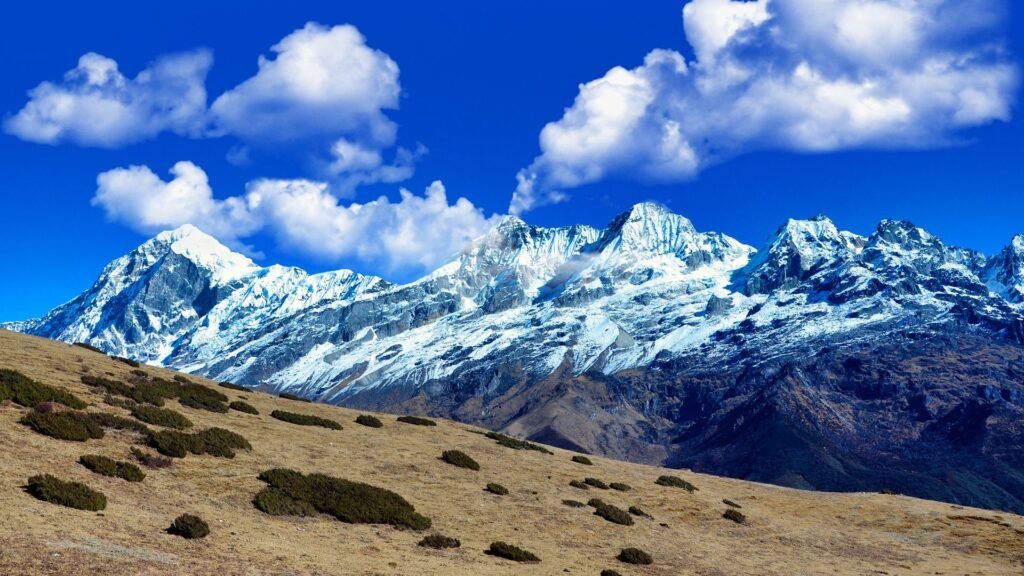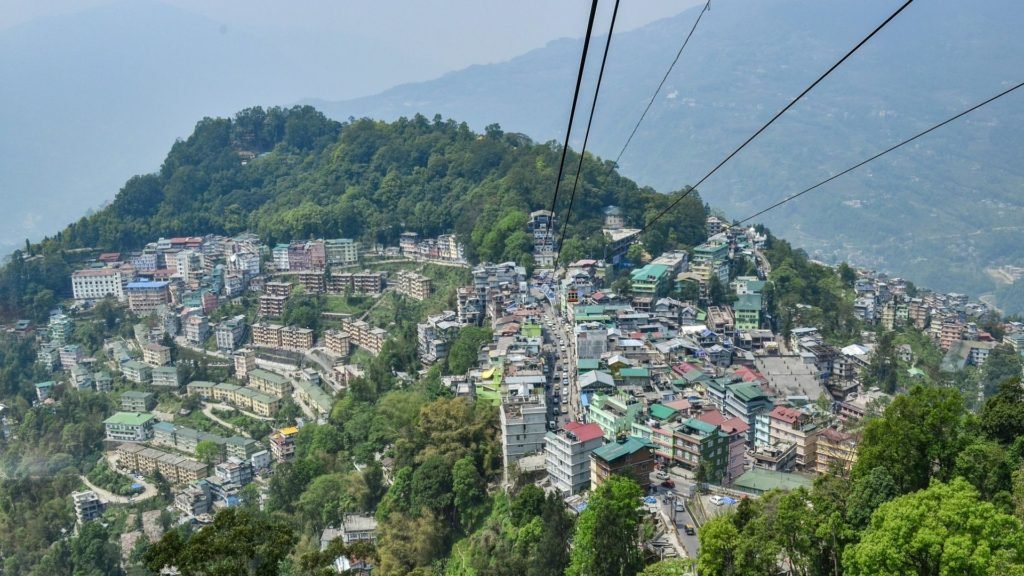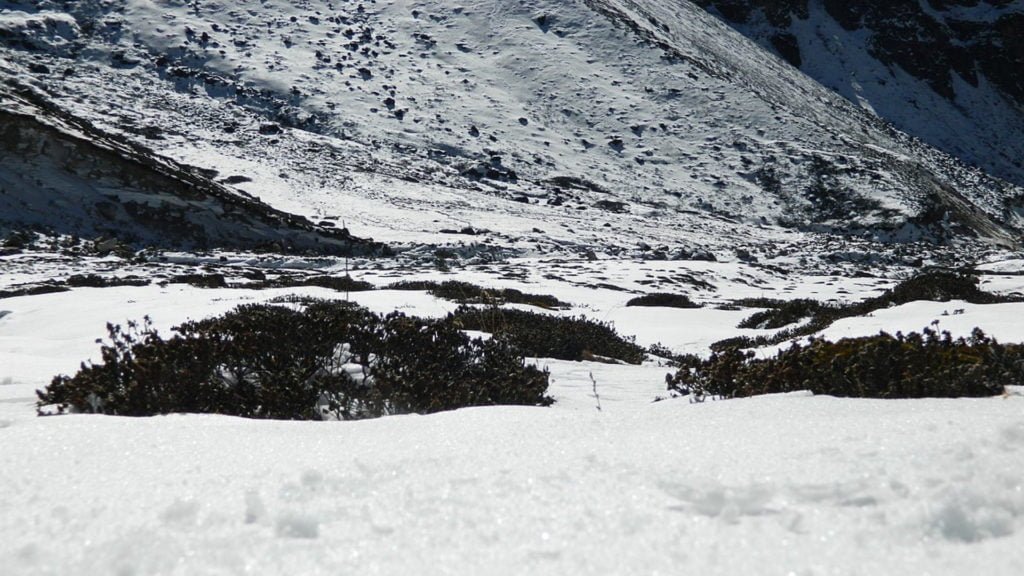Planning for holidays in Sikkim? Here’s the checklist for the Sikkim trip that guides you about things like clothes to wear in Sikkim, travel essentials, packing tips in different seasons, what you should carry for the Sikkim trip on priority, and more.

If you are planning a trip to Sikkim, then the first thing to consider is the weather and altitude of Sikkim.
Sikkim is tucked away in the eastern Himalayas, is a stunning destination known for its snowy mountains with the combination of greenery. Places like Gangtok, Pelling, Lachung, Yuksom, and Ravangla offer a wide range of experiences for travel enthusiasts. Whether you are at waterfalls, hiking through the forests, or exploring monasteries, packing smart is the first and foremost step to enjoying your trip.
Planning your itinerary? Don’t miss our detailed Sikkim Travel Guide for must-visit places, local experiences, and insider tips.
To help you prepare better, we are here with an updated Sikkim travel packing checklist with descriptions, based on the time of your visit, weather, and activities planned.
Sikkim elevation ranges from sea level up to towering Himalayan peaks over 28,000 feet high. The temperatures can be unpredictable and shift rapidly. So, packing smartly is your only way to immerse yourself in this trip without worrying about anything else.
Clothes to Wear
Sikkim’s weather can vary drastically, so dressing in layers will always help you and prepare you for rain, wind, and cold.
Essential Clothing for All Seasons

- Thermal full body – You should keep your core warm, especially in higher altitudes.
- Trousers or jeans – Go for comfortable and stretchable ones for long journeys.
- Woollen clothes – Sweaters are necessary in all seasons because of unpredictable weather.
- Windcheaters – Definitely for strong mountain winds.
- Comfortable shoes or boots – For long distances or hiking in uneven terrain.
- Shorts and T-shirts – During spring and summer.
- Raincoat or Umbrella – Rain can be sudden and frequent; stay dry.
- Socks – Preferably multiple pairs for winter.
- Caps, mufflers, and gloves: For the evenings and early mornings.
- Rentable items – Consider renting overcoats, leather gloves, and high-cover boots to save space.
Medicines to Carry
- Antacids and Painkillers
- Motion sickness tablets
- Altitude sickness tablets
- Cold and flu meds
- Basic first aid kit
Carry doctor-prescribed medicines and the list.
Things to Carry – March & April (Spring)
During these months, it’s usually mild weather during the day and chilly evenings,
- Sunglasses and Sunscreen – UV exposure increases at higher altitudes.
- Light woollen clothes – It will be perfect for early mornings and evening walks.
- Hats and caps – For the mid-day sightseeing.
- Shoes – Trekking shoes or comfortable shoes.
- Thermal inners – It can get unexpectedly cold at night.
Things to Carry – May, June, & July (Summer)
Days are warmer at this season, but the evenings can be cold, and this is the beginning of the monsoon season.
- T-shirts and shorts – Always comfortable for the day.
- Light jackets, windcheaters, and sweaters – For unpredictable weather.
- Thermal wears – Ideal for chill mountain zones.
- Raincoat or Umbrella – Rain can be unpredictable and common.
- Sports shoes – Make sure to get water-resistant ones.
Things to Carry – August & September (Late Monsoon)
Be prepared for a mix of sunny days and downpours.
- Thermal wear – It’s best to carry it in all seasons.
- Jackets, windcheaters, and sweaters – For both the chill weather and mild warmth.
- Gloves, scarves, and mufflers – These can be handy during a trek or morning jeep rides.
- Waterproof shoes or boots – Roads can be muddy or slippery.
- Raincoat and umbrellas – Keep one handy.
Things to Carry – October (Autumn)
This is the season for crisp weather, perfect for sightseeing.
- Heavy woollens and jackets – Nights can be colder, especially in the North.
- Muffler, caps, and gloves – Light woollen items can help you add warmth.
- Sturdy shoes or boots – Ideal for treks and walking long distances.
Things to Carry – November (Early Winter)

Layers are very crucial, and you can expect dry and cold air,
- Thermals, sweaters, and jackets – Layer and bundle up.
- Woollen gloves and warm socks – To avoid discomfort on treks and frostbite.
- Scarves, mufflers, and beanies – Keep your ears and head protected.
- Boots – Trek-friendly and water-resistant.
Things to Carry – December to February (Early Winter)
These are the coldest months, and snowfall is known to be common in North Sikkim.
- Full-body thermals – Wear them for warmth.
- Heavy woollens – Essential
- Woollen gloves, hats, and beanies
- Thick trousers or jeans – Double layering is best.
- Sturdy boots with warm lining – Necessary for walking on icy trails and snow.
Must-Have Essentials
- Insulated water bottle.
- Mosquito repellent
- Backpack
- Camera or phone with storage
- Snacks
- Sanitiser and wipes
- Lip balm
- Sunscreen
- Power bank
- Waist bag
- Laundry bag or dry bag
Do you need help choosing what to pack for your trip? Ask locals and other travellers directly in our Travel Forum to find out about their experiences, unusual recommendations, and community-curated tips.
Travel tips
- Always check weather updates before planning your travel dates.
- Pre-book the permits for North Sikkim, Nathula Pass and restricted zones.
- Avoid littering
- Choose homestays to experience a local experience.
Before you pack, don’t forget to check our Weather Forecast Tool for accurate, up-to-date climate details in Sikkim. It helps you plan your outfits and day trips more effectively.
FAQs (Frequently Asked Questions ) – PAA (People Also Ask Questions)
1. Is rain gear necessary all year round?
Absolutely. Sikkim sees rainfall frequently, especially from May to September. A raincoat and umbrella are year-round essentials.
2. Can I rent heavy clothing in Sikkim?
Yes, overcoats, boots, and gloves can be rented in places like Gangtok or Lachung during winter.
3. Are thermals needed in March or April?
They are recommended for nights, especially if travelling to colder areas like Lachen or Zero Point.
4. Do I need permits for Sikkim travel?
Yes, especially for North Sikkim and border areas. Indian citizens need Inner Line Permits, and foreign nationals need Restricted Area Permits (RAP).
5. Are ATMs and mobile networks available across Sikkim?
In major towns like Gangtok and Pelling, yes. But in remote areas, connectivity and ATM access can be limited—carry cash and download offline maps.
6. What kind of shoes should I pack?
Waterproof trekking or sports shoes with good grip are ideal. If visiting in winter or trekking, opt for snow boots or sturdy hiking shoes.
ALSO READ: What to Pack For a Kashmir Trip? A Complete Guide For Travellers!
